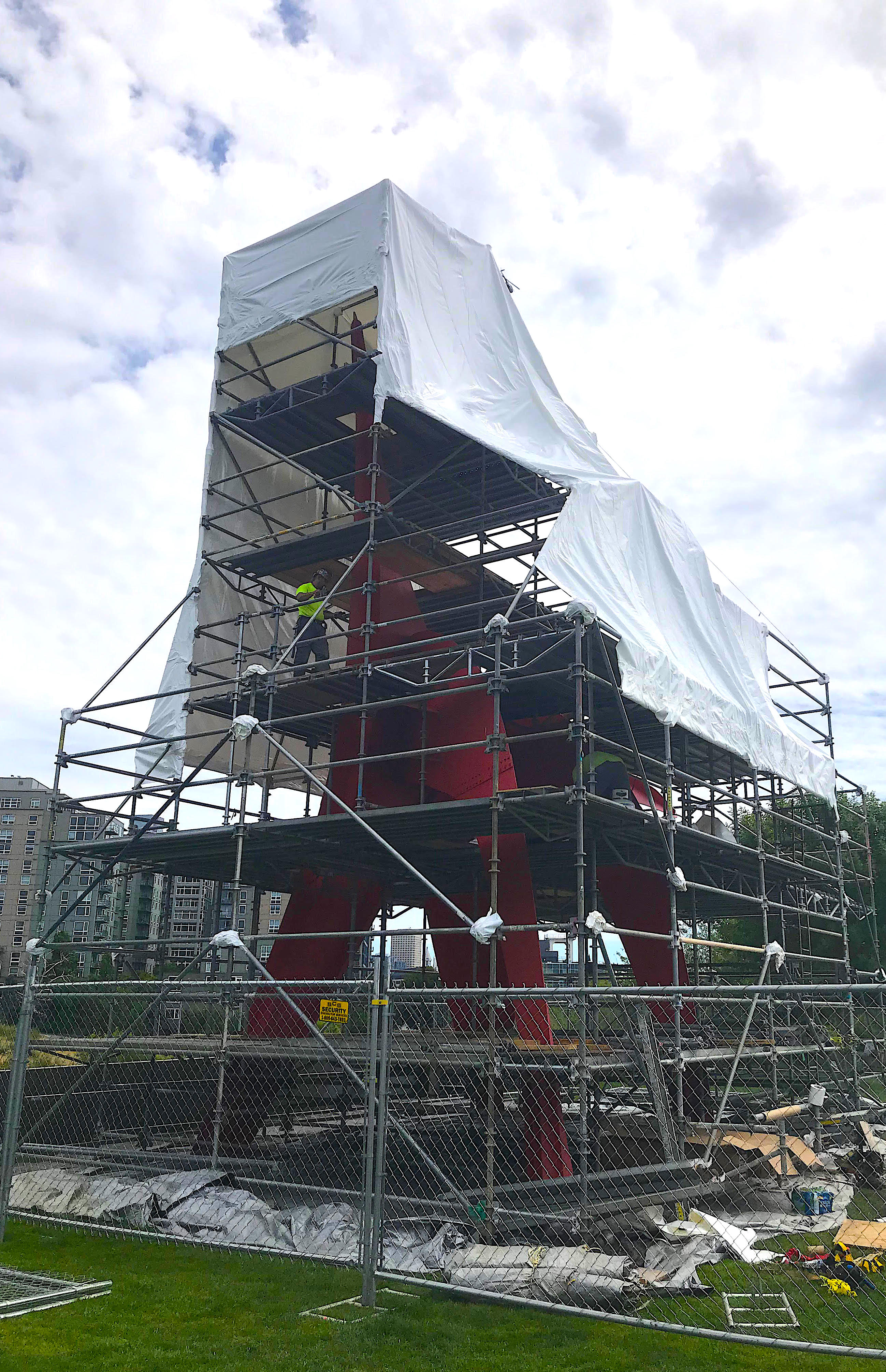
Very few consider the costs and processes needed to maintain and preserve master works for future generations. I was fortunate enough to witness preparations for the latest paint job of Alexander Calder’s sculpture entitled Eagle. The sculpture cost $10 million, was gifted to Seattle’s Museum of Art and moved to its current location in 2006. The sculpture is the visual centerpiece of the Olympic Sculpture Park. This captivating, six ton, 38-foot-tall, sweeping, abstract, bright red form is framed by Puget Sound and the Olympic mountain range in the distance. This work stands in contrast to the light, gracefully floating mobiles that made Calder famous. The conservation work shown in this image was funded by the Bank of America’s art conservation program, started in 2010. This program has provided funds to restore more than 170 works of art in more than 33 counties.
The Eagle has been repainted several times; however, being exposed to the harsh marine air turns the work to a chalky pink color in a matter of years. Ironically, lesser birds frequently empty their bowels on the flightless Eagle, and gardeners are now required to use hand scissors to cut the grass at its base. This latest conservation effort will use recently developed paint and coating technology to restore the work to Calder’s signature red color. Apart from being produced by toxic elements like vermillion and cadmium, red pigment tends to fade quicker than other colors. Red paint reflects red light and absorbs light with shorter wavelengths such as green and blue. These waves contain more energy and therefore have a greater bleaching effect. I wonder if Calder, trained first as a mechanical engineer, knew what trouble he would cause art conservationists before he painted this sculpture with his signature red.
